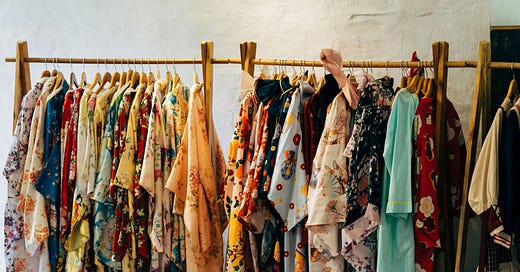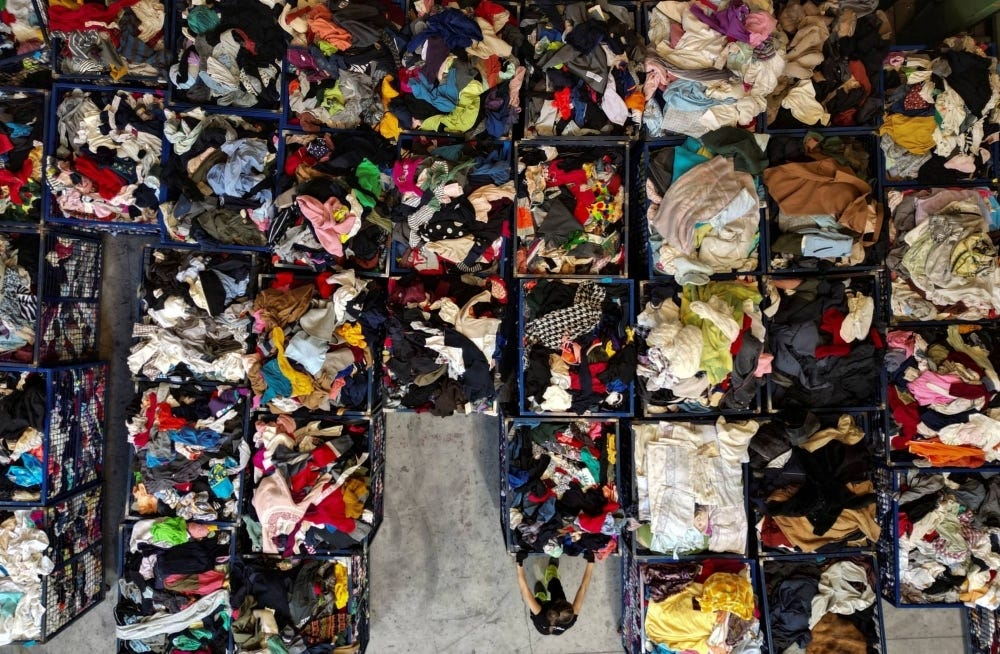European Fashion Industry: Is Regulatory Compliance The New Fashionable Trend?
Source
In today’s world, fashion has transcended the confines of apparel and garments. Although fashion has predominantly been used as an expression of style, it has now also become an expression of identity, a source of technological innovation, a means of influence, and a constantly reinventing area of knowledge. In Europe, regulatory compliance is rapidly emerging as a defining force, shaping not only how clothes are made, but how fashion companies compete and endure.
The fashion industry comprises a diversity of entities, ranging from large luxury houses to Small and Medium-sized Enterprises (SMEs). Not only does the growing number of players in the fashion industry correlate to its growing size and market, but the different types of entities also influence how they conduct business. The luxury fashion business model is built on exclusivity and brand prestige, which is created through high price points, limited product releases, and selective distribution channels. Luxury brands place an emphasis on craftsmanship by selecting materials and production techniques that ensure longevity and quality. Additionally, luxury brands tend to craft a shopping experience for their consumers, invest in sustainability initiatives, and integrate digital tools to enhance in-house services, such as supply chain efficiencies and customer service quality. Comparatively, SMEs tend to target specific market segments, offering specialized products that cater to particular consumer needs or preferences. With smaller operations, SMEs are more directly involved with market trends by way of their ability to adapt while experiencing limited bureaucratic delays. SMEs also heavily leverage direct-to-consumer sales through social media and marketing campaigns, which reduces overhead costs and creates a closer customer relationship with their market.
Fashion in Europe: Front and Centre
Fashion has been front-and-centre in Europe for as long as we can remember, gradually gaining socio-cultural, economic, and political significance. Europe is home to several of the world’s major fashion hubs—Paris, Milan, and London—each of which has historically shaped global fashion trends. Paris, considered the centre of haute couture, houses giant fashion houses like Chanel, Dior, and Louis Vuitton, which are synonymous with luxury and craftsmanship. Milan has been a pioneer in industrial fashion production, with name brands like Prada and Armani. London is renowned for its innovative and avant-garde approach to fashion, producing experimental designers from schools like Central Saint Martins.
Additionally, the fashion and textile industry is a major economic engine in Europe valued at 483 billion euros in 2023, projected to reach 179.9 billion euros in revenue in 2025 and 236.3 billion in revenue by 2029. Its growth is characterized by its trade significance and capacity, the employability of its value chain, the specific growth of fast-fashion due to contemporary fashion trends, as well as the knowledge-based approaches that fuel innovation in European fashion. Furthermore, European fashion has also served as a platform for socio-political discourse. In part due to its cultural and economic momentum, fashion also became an ethical battleground where discussion and debates addressed its overproduction and supply chains issues, among other topics. Political commentary in fashion, in the image of Dior’s feminist slogans, has advanced the idea that fashion is becoming increasingly intertwined with political expression.
Environmental Regulation: The X Factor of the European Fashion Industry
The European environment has also considerably changed in recent times. By way of its recent regulatory efforts, Europe has shown its fitness for environmental stewardship. For example, Europe committed to climate-neutrality by 2050, namely by tackling climate, energy, transport, biodiversity, and pollution-based issues via the European Green Deal. One of its key initiatives is to concurrently increase Europe’s resource-efficiency and maintain economic competitiveness, all while decarbonizing. In essence, the European Green Deal urges European countries to reorganize their economies in a way that decouples economic growth from resource use. Other key policies and initiatives include the EU 2030 Biodiversity Strategy, and the EU Emissions Trading System; with key objectives ranging from biodiversity protection to zero pollution, Europe has been focusing on progressive legislation that encourages sustainable product and waste reduction.
Source
However, European fashion companies—small and big fashion corporations alike—have traditionally resorted to a linear business model that leveraged a “take-make-dispose” approach to maximize profit. This model emphasized rapid production and a need to incessantly roll out new collections, all with low-cost manufacturing. Coupled together, this gave rise to fast fashion, where brands like H&M, Zara, and Shein use this strategy to drive profits and expand their consumer pools. Fast fashion brought forth an ecosystem whereby consumers never ran out of options due to how quickly fashion companies would roll out new collections. This quick turnaround would in turn increase consumer demand, subsequently driving more competitiveness among fast fashion companies. The relationship between supply and demand in fast fashion presented scaling opportunities for fast fashion companies, yet further exacerbated the environmental and social challenges that would emerge from the fast fashion model. For example, Shein reported 16.7 million metric tons of CO₂ emissions in 2023, a 176% increase since 2021. The company’s reliance on carbon-intensive air freight and synthetic materials like polyester exacerbates its environmental impact. Ranging from textile waste, resource depletion, and labor exploitation, the supply chain of fast fashion as a whole is riddled with environmental, ethical, and purely illegal practices due to the golden rule of low-cost manufacturing and rapid production.
Cost of Non-Compliance vs. Cost of Adaptation
The challenges for most European fashion companies to adapt to the new regulatory environment are quickly evident. European fashion companies must consider how to decarbonize while staying price-competitive, how to stay on top of regulations and reporting requirements, whether to re-shore production to improve emissions control, how to best account for scope 3 emissions, and how to maintain a consumer base while effectively slowing production, among several other themes. At the root of it all, European fashion companies with an integrated linear business model must decide whether to bear the cost of non-compliance or the cost of adaptation. In other rather crude words, either they get with the trend, or they fall behind.
The transition from a linear business model to a circular one has a series of implications. Regarding fashion companies’ business model, fast fashion is under pressure from waste laws alone. European companies are motivated to maintain their access to consumers to maintain profit margins; hence, establishing rental platforms alongside integrated resale and repair services is a means to bring forth a circular model. Regarding the design of garments, the use of single material types supports recyclability. Regarding the reconfiguration of supply chains, fashion companies are investing in technology to adhere to traceability and transparency requirements, as reflected by the Digital Product Passport.
European environmental regulations seem designed to encourage its fashion companies, and other relevant players and stakeholders, to adopt sustainable practices. Thus, by getting with the trend, European fashion companies are not only making the fashionable choice, they are also making the sustainable one by adhering to regulatory compliance. In actuality, the choice between non-compliance and adaptation is less a question of cost and more a question of future viability. Regulatory momentum in Europe signals that sustainability is no longer optional—it is structural and inevitable. While the transition is undeniably complex and demanding, the cost of inaction is steeper: reputational damage, financial losses from potential regulatory fines and restricted market access, among other consequences. Adaptation is not only a policy response from a compliance perspective, but also a strategic investment for long-term resilience from a growth and sustainability perspective.







